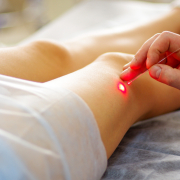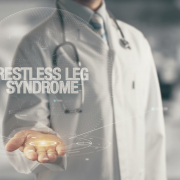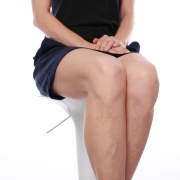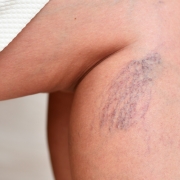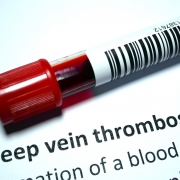How Can Compression Therapy Treat Your Vascular Issues?
Compression therapy is a treatment used to prevent and treat vascular issues such as chronic venous insufficiency and other vein disorders. Compression therapy involves wearing specially designed socks or stockings to support veins, increase circulation, and prevent symptoms such as swelling and discomfort in the legs.
Vascular issues consist of any abnormal conditions of the blood vessels which includes the veins and arteries. Vein disease is a chronic condition that encompasses a range of disorders that, over time, can cause a number of uncomfortable symptoms.
Most veins are responsible for carrying deoxygenated blood from the tissues in the body back to the heart. In order to successfully perform this function, each vein is equipped with one-way valves that keep blood flowing in the right direction, towards the heart. The valves close once the blood has passed through them. Vein disease can prevent the veins from functioning properly. It can occur in any of the veins throughout the body but most commonly involves the veins in the legs. This is because these veins have to work harder (against gravity) to pump blood from the lower legs to the heart, making them more likely to become damaged and diseased.
Vein Disease
When the walls or the valves of a vein become weakened or damaged, it can prevent it from functioning properly and result in a condition known as chronic venous insufficiency. This condition makes it difficult for blood to return to the heart and can cause blood to pool in a segment of the vein. If there is increasing dilatation of the vein, the blood can even flow backwards down the leg, which can lead to increased pressure inside it. Over time, raised pressure can damage and stretch the veins further, causing sluggish blood flow and potential blood clot formation. This condition results in vein disease disorders such as spider veins, varicose veins, skin rashes, chronic inflammatory skin conditions, and ulcer formation, which if left untreated, can lead to even more serious health issues such as deep vein thrombosis and pulmonary embolism.
Vascular issues, such as varicose veins and spider veins, can cause pain and discomfort as well as look unsightly, but there are a range of treatment options available to alleviate symptoms, improve the appearance of skin, and prevent the disorder from worsening. Treatment will depend on the severity of the vascular issue but can range from conservative treatments and minimally invasive procedures to surgery. Conservative vein disease treatments such as compression therapy and exercise are a highly effective way to prevent the development of additional varicose or spider veins, and can significantly reduce painful symptoms.
Compression Therapy
Compression therapy involves the use of socks, stockings, or sleeves which can vary in length, and are worn from the foot to the calf, knee, or thigh. They are designed to provide support to the legs and veins, improve venous circulation, and minimize swelling and discomfort. They are usually put on in the morning before you get out of bed and are then removed at night before going to bed. This is because leg veins function better in a horizontal or elevated position.
Compression stockings can improve the signs and symptoms of various venous disease conditions by providing graduated compression, with the strongest support starting at the foot and ankle and gradually decreasing pressure towards the top of the garment. The pressure created by the stockings compresses the surface arteries and veins, reducing the diameter of veins, and helps the vein valves to function more effectively and improve blood flow back to the heart. This reduces the chance of blood pooling in leg veins and forming blood clots. The graduated compression works in conjunction with the pumping action of the calf muscles, which also assists with overall circulation.
Compression therapy works best in conjunction with exercise, as both help to regulate blood flow and prevent blood from pooling. Regular exercise, particularly aerobic activity like walking, running, swimming, or biking for 30 minutes at least 5 days a week can strengthen the calf muscle pump and allow the vein valves to function more effectively, promoting greater blood return back toward the heart.
Treatment for Vein Disease in Kansas City, MO
If you are looking for vein disease treatment in Kansas City, speak to the experts at Missouri Vein Specialists. Experienced vein specialist Dr. Scott Darling and his staff offer a variety of treatment options including conservative, minimally invasive, and surgical treatments to treat a range of vascular issues. Make an appointment today by calling 816-792-3400 or you can fill out our online form.



